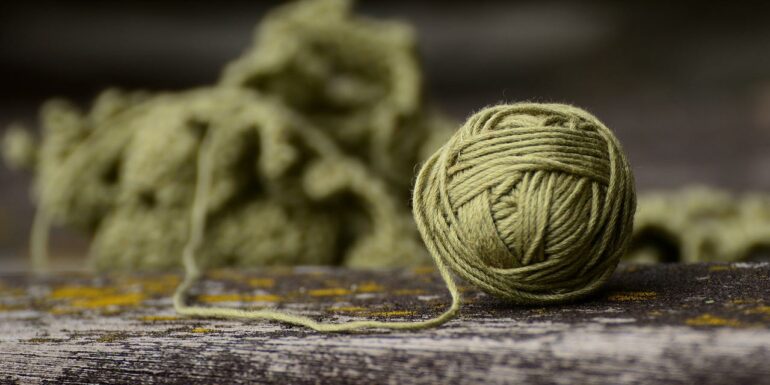Montale in northern Italy can have been one of the earliest centers in Europe for production of wool during the Bronze Age. Production may also have been on an industrial scale.
Archaeologist Serena Sabatini has drawn this conclusion after having analyzed archaeological finds in the form of textile tools and teeth from sheep and goats.
“We understood that this was an intense production because of the large amounts of textile tools at the settlement. We then analyzed the teeth to better understand how the production of wool was organized.”
Archaeology is increasingly using methods from the natural sciences. Serena Sabatini, archaeologist and associate professor at the Department of Historical Studies, works with researchers at the Danish National Museum to utilize strontium isotope analyses in her research.
Within the research project “Bronze Age wool economy: production, trade, environment, husbandry and society,” published in the Journal of Archaeological Science: Reports, she collected teeth from sheep/goats from the Bronze Age settlement at Montale in northern Italy. The material was analyzed to measure the strontium isotope values contained in those bones.
Analyses reveal the answers
Strontium is a mineral that is present in both food and water, and it is absorbed in human, animal and plant tissues.
“Strontium values in teeth and the temporal bone accumulate in childhood and do not change in adulthood. This allows the determination of whether individuals spend their childhood in the area where they were buried or if they moved there as an adult or adolescent. It is similar for animals, and in this research project we have analyzed teeth from sheep and goats to investigate animal mobility in the landscape,” says Serena Sabatini.
During the Bronze Age, one considers that both people and animals likely ate food and drank water from the surrounding area. Thus, the values that can be recorded in their bones and tissues likely correspond to specific areas where they were born or grew up and moved to.
Large scale wool production
The results of the analyses show that most of the animals were raised in the Montale area where they also died; thus, they were likely closely managed by the community living at the site. This in turn confirms previous theories about their importance in large-scale local wool production.
“We should also be aware that sheep during the Bronze Age did not produce as much wool as today’s sheep,” says Serena Sabatini.
Previous research from the Mediterranean area, where written sources were available, shows that it took a full year to produce 3 kilograms of wool. This required a mixed flock of ten sheep, with both adults and lambs. To be able to weave a simple cloth of 3.5 meters by 3.5 meters required 4 kilograms of raw wool.
“You can understand immediately that organizing an economically sustainable and profitable production of wool fibers required managing large numbers of sheep flocks.”
The history of wool
Interest in the study of textile production, particularly wool production, throughout history has been increasing in recent years.
“The purpose of this project is to reveal the importance of wool and the production of wool textiles in the European Bronze Age,” says Serena Sabatini.
Recent studies indicate that during the 2nd millennia BCE certain continental centers, like Montale in northern Italy that was part of the Terramare culture, succeeded in understanding the economic importance of wool.
“Thanks to particularly favorable social and environmental conditions, they were able to specialize in the production of wool and likely exported wool, wool yarn or perhaps even woven wool textiles. They were then able to trade wool and textiles for goods not available in the area.”
More information:
Serena Sabatini et al, Investigating sheep mobility at Montale, Italy, through strontium isotope analyses, Journal of Archaeological Science: Reports (2021). DOI: 10.1016/j.jasrep.2021.103298
Provided by
University of Gothenburg
Citation:
Industrial manufacturing of wool and wool textiles in Bronze Age Italy (2022, June 1)



